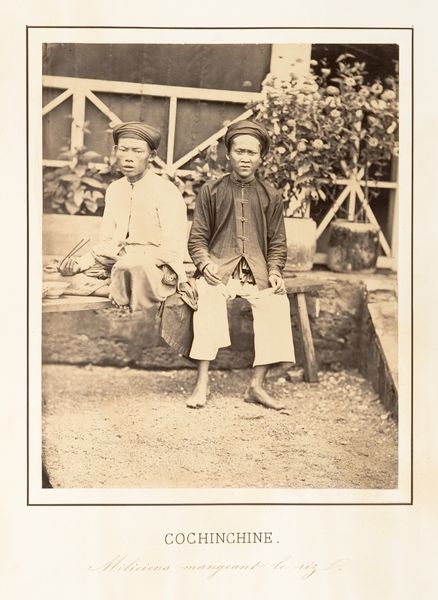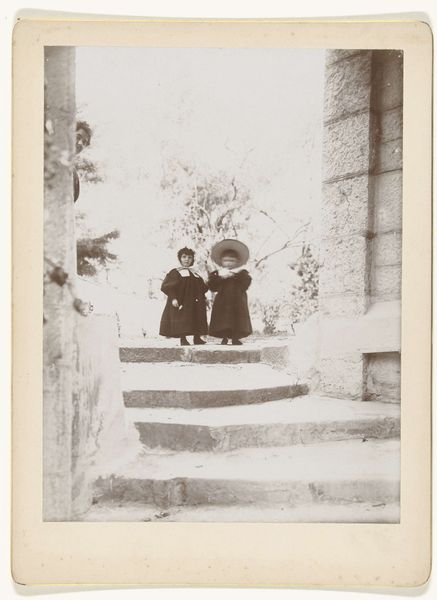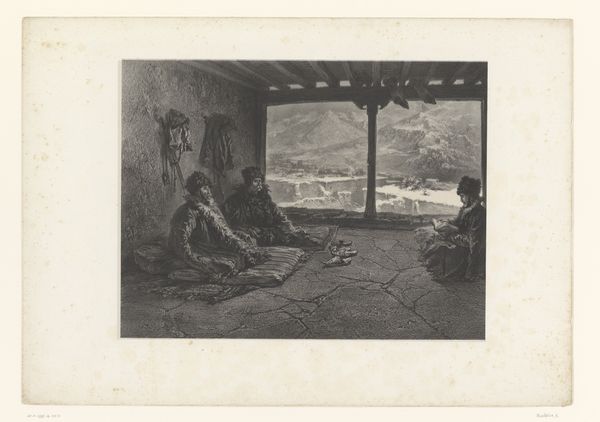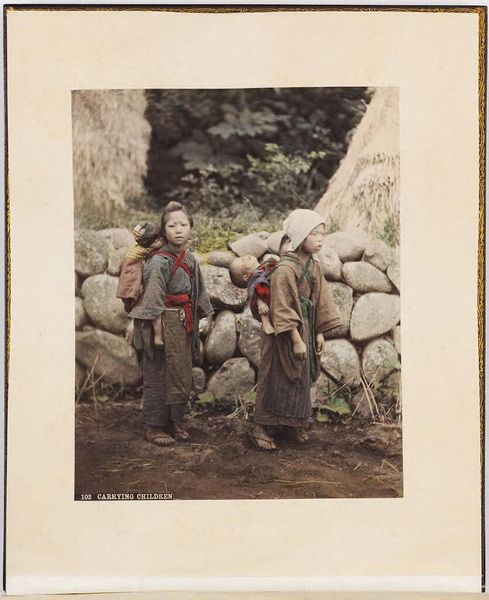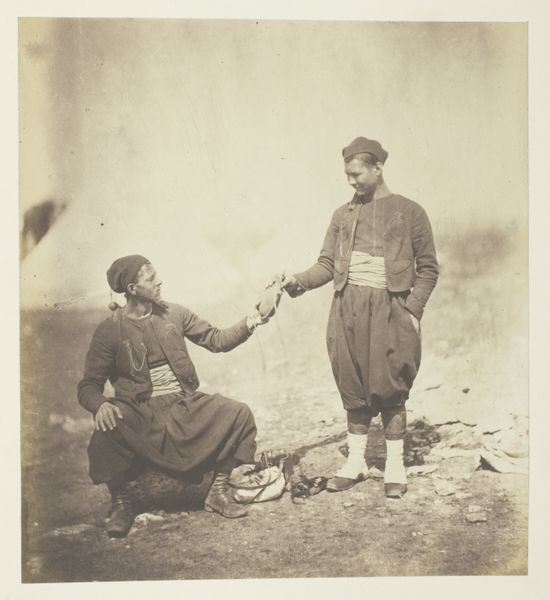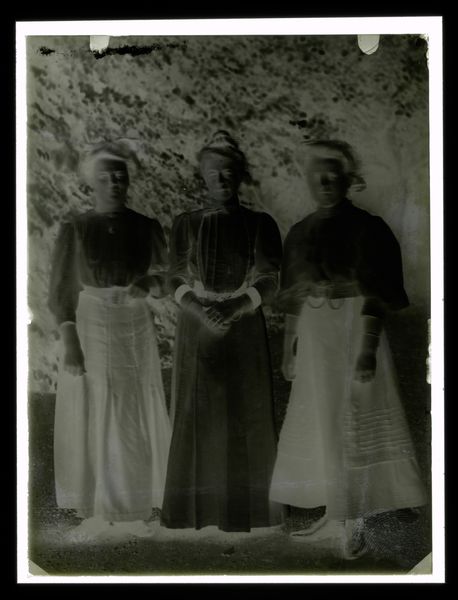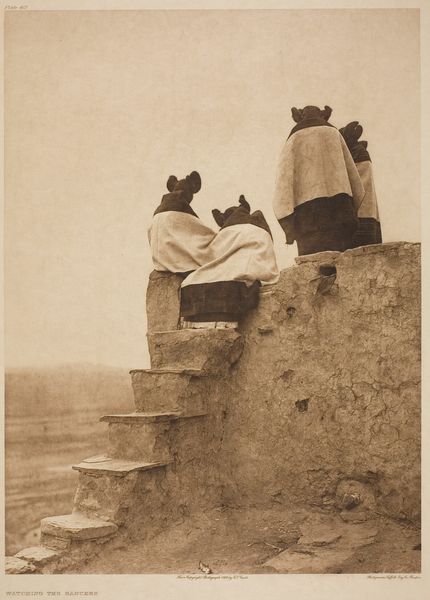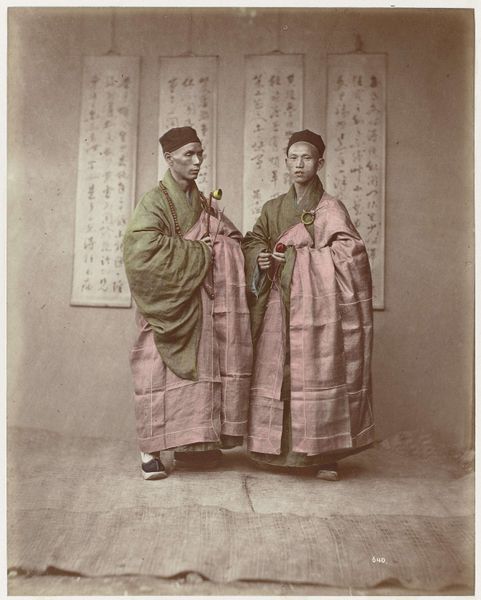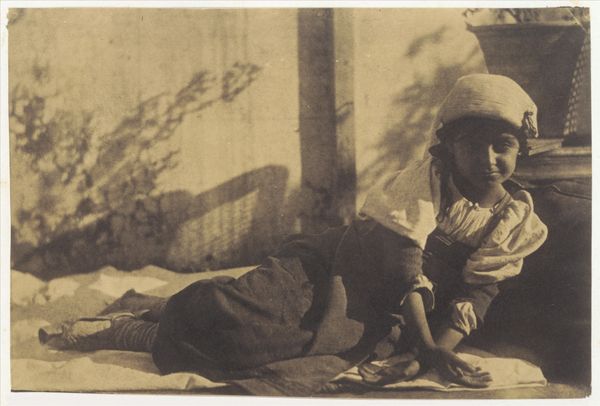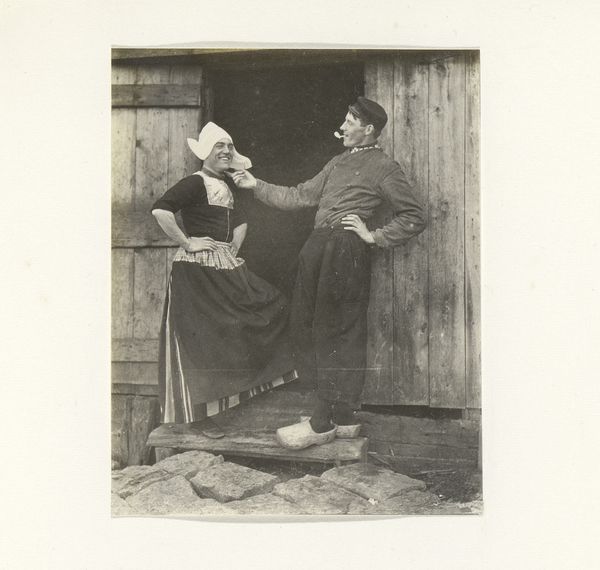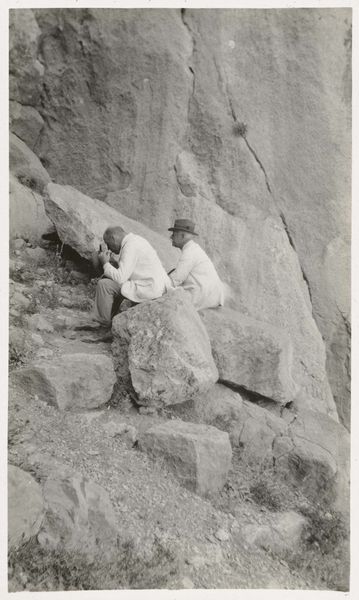
photography
#
portrait
#
pictorialism
#
photography
#
historical photography
#
indigenous-americas
Dimensions: 38.9 × 29 cm (image); 42 × 32 cm (paper); 57.1 × 46 cm (mount)
Copyright: Public Domain
Editor: This is Edward Curtis’s “At the Trysting Place,” a photograph taken in 1921. I'm struck by how staged it feels, almost like a painting rather than a candid shot. The figures are so still and posed. What can you tell me about the symbolic meaning in this piece? Curator: Indeed, the stillness contributes to a powerful symbolic presence. The "trysting place" itself, often a location imbued with secrecy and anticipation, suggests a liminal space, doesn’t it? These women, posed with a certain formality, could be seen as representing a moment of cultural intersection or even cultural resistance. The heavy shawls, while shielding them, also create a kind of visual barrier. What do you think that barrier represents? Editor: Perhaps a barrier between their world and the encroaching outside world? Their culture and traditions being something to protect? Curator: Precisely. And consider the tree behind them, seemingly sheltering them. Trees often serve as symbols of endurance and rootedness. Do you think Curtis intentionally used the plant to reinforce the theme of cultural survival? Editor: I hadn't thought of it that way, but it makes perfect sense. The women are young and resilient, just like the tree that shelters them from outside influence. So, is Curtis presenting these women as symbols of cultural continuity? Curator: It's a compelling perspective. Their stoic expressions become less about passive posing and more about an active choice to embody and preserve their heritage. And consider, too, the very act of Curtis photographing them. Was he preserving a record, or participating in another form of cultural disruption, by displaying them publicly? It seems Curtis asks us to question the boundaries between representation, preservation, and interpretation. Editor: It definitely gives me a new perspective on what I originally thought was just a simple portrait. Thank you! Curator: A pleasure. Images, aren't they amazing, and how many histories they convey depending on our viewing?
Comments
No comments
Be the first to comment and join the conversation on the ultimate creative platform.
